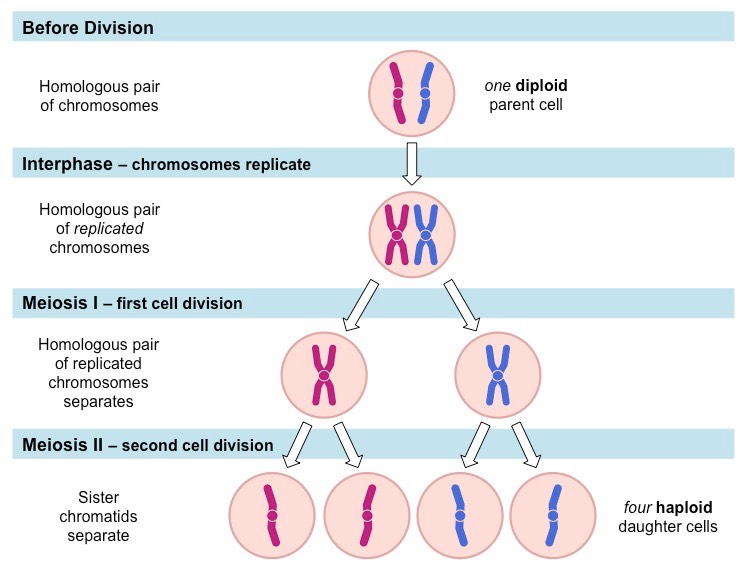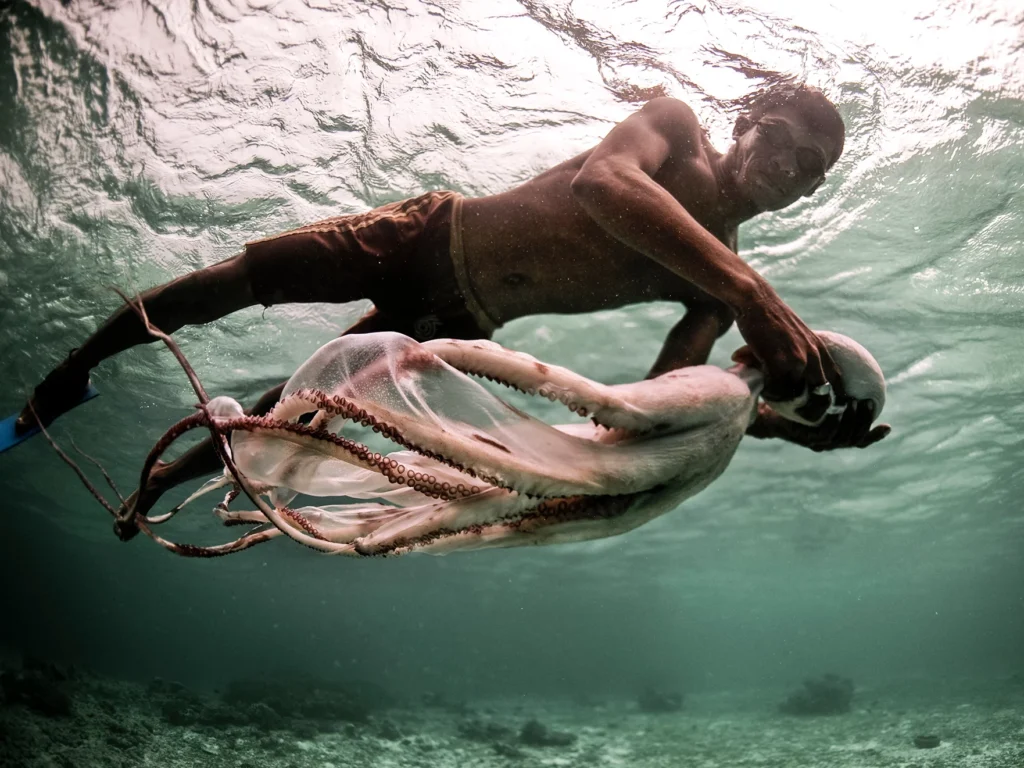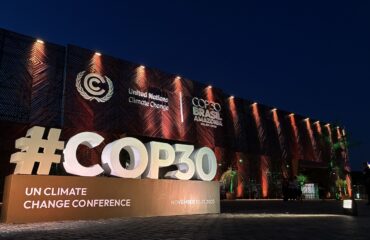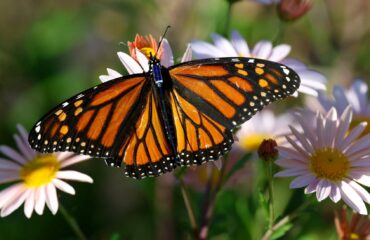
Image: Borneo Child Aid
By Mariana Meneses
Researchers have long been fascinated by how organisms generate genetic diversity, which is crucial for adapting to changing environments.
Ever wondered how living beings, from microscopic bacteria to majestic elephants, manage the intricate world of their genetic makeup?
A recent paper by David G. King explores how organisms shuffle their “genetic cards’ during reproduction, ensuring offspring inherit a diverse genetic mix to adapt to different environments. The study challenges the idea that mutations are bad news, and, instead, suggests that nature has its own way of introducing mutations without causing genetic chaos.
King’s research highlights the crucial role of meiotic recombination – a process vital for generating genetic diversity during sexual reproduction – in ensuring that offspring can adapt to a variety of environments through unique gene combinations.
Despite the apparent cost of sexual reproduction, where offspring inherit only half of their genetic material due to meiosis, the benefits of genetic variation far outweigh this drawback. Moreover, the study challenges the conventional notion that mutations are predominantly harmful by introducing the concept of “mutation protocols.” These protocols, like replication slippage, facilitate the generation of mutations with minimal negative consequences, acting as subtle genetic fine-tuning mechanisms.
This fresh viewpoint reframes mutations not as mere errors but as potential sources of adaptation, offering intriguing insights into how organisms explore DNA sequence space.
Replication slippage is a genetic process where DNA strands misalign during replication, leading to the insertion or deletion of nucleotides and consequently generating mutations (Wikipedia).

“Meiosis is the process by which sex cells (gametes) are made in the reproductive organs” Credit: BioNinja
One example of genetic mutations in humans is well-known: the Bajau people.
The Bajau people, colloquially known as the “sea nomads,” provide a captivating example of humans harmonizing with their aquatic environment throughout the waters of the Philippines, Malaysia, and Indonesia. Renowned for their diving skills, they exhibit an extraordinary capability to live without breathing, holding their breath for staggering durations of up to 13 minutes while navigating depths of approximately 60 meters.

“Members of the nomadic Bajau people often spend up to five hours a day underwater.” The picture shows a Bajau diver with a freshly-speared octopus. (NPR) Credit: James Morgan
This exceptional skill finds its roots in a genetic adaptation.
Studies reveal that the Bajau possess spleens that are 50% larger than their mainland counterparts, the Saluan people, facilitating prolonged oxygen conservation through mechanisms like decreased heart rate and contraction of the spleen, an organ in the upper left abdomen that filters blood, recycles red blood cells, and supports the immune system. Although often overlooked, the spleen emerges as a vital ally in their underwater ventures, aiding not only in oxygen storage but also in bolstering the immune system and recycling red blood cells.
Genetic analyses have pinpointed the presence of the PDE10A gene within the Bajau populace, suggesting its involvement in regulating thyroid hormones – chemicals produced by the thyroid gland that regulate metabolism, energy levels, and growth – thus illuminating the intricate interplay between genetics and environmental demands in shaping human physiology.
Another example comes from the mountains in Tibet.
The Sherpas, an ethnic group originating from eastern Tibet, are prevalent in the mountainous regions of Nepal, Tibet, Bhutan, and parts of India. Their name, derived from Tibetan words meaning ‘eastern people’, reflects their geographical origin. Residing primarily in eastern Nepalese valleys like Solukhumba, Sherpas also inhabit regions farther west and in neighboring countries. Their language, a distinct branch of Tibeto-Burman languages, and their Tibetan Buddhist faith, shape their cultural identity.
The Sherpa people are renowned for their exceptional ability to withstand high altitudes.
Studies have shown that Sherpas possess genetic adaptations that enable them to thrive in oxygen-deprived environments at extreme elevations. For instance, research has revealed that Sherpas have higher levels of nitric oxide in their blood, which helps to improve blood flow and oxygen delivery to tissues, crucial for sustaining energy levels in low-oxygen conditions. Their remarkable endurance and resilience in high-altitude environments make them indispensable guides and porters for climbers tackling the world’s tallest peaks.
Celebrated for their mountaineering expertise, Sherpas serve as guides for climbers tackling Himalayan peaks, notably the world’s highest point, Mount Everest.
Despite having evolved into indispensable figures in Himalayan expeditions, Sherpas face risks and challenges. Some have lost their lives on Everest, and their contributions are sometimes underappreciated or exploited. Not all porters are ethnic Sherpas, but they play crucial roles in ensuring the success and safety of climbers, especially at higher altitudes where their genetic adaptations to low oxygen levels give them an advantage.
While famous Sherpas like Tenzing Norgay and Apa Sherpa have set records in mountaineering, many have diversified into other professions and areas of the world including Western nations like the United States, where New York City hosts the largest Sherpa community. Cultural practices, such as naming conventions and religious ceremonies, reflect their deep-rooted traditions, while their diet, primarily consisting of Dal Bhat, fuels their demanding lifestyle in the mountains. (“Dal Bhat, literally meaning ‘Lentil Soup’ (Dal) ‘Boiled Rice’ (Bhat), is a popular meal among the Himalayas and is the unofficial national dish of Nepal,” according to Chef Soraya.)
Sherpa: The people who first climbed Mt. Everest | SLICE
Scientists continue to learn from our DNA, as they draw inspiration from natural genetic inheritance to train neural networks.
A study published earlier this year by Fu Feng and co-authors introduce Genetic Transfer Learning (GTL), a framework inspired by natural genetic inheritance to efficiently transfer essential knowledge to neural networks. They propose the concept of “learngenes,” mimicking the way genes encode vital information in organisms. Through GTL, networks are trained, superior learngenes are selected, mutations occur, and beneficial learngenes are passed to subsequent generations. By applying this approach, they demonstrate significant improvements in dataset accuracy with reduced parameters (i.e. it does more with less; the model learns to perform tasks more efficiently, requiring less detailed input from programmers).
Overall, they suggest that this method could be a highly effective and efficient strategy for enhancing neural network performance.
“A neural network is a method in artificial intelligence that teaches computers to process data in a way that is inspired by the human brain. It is a type of machine learning process, called deep learning, that uses interconnected nodes or neurons in a layered structure that resembles the human brain.” (Amazon)
Put simply, imagine you have a very smart robot that you want to teach to do different tasks, like recognizing objects or understanding language. Normally, you’d train it on many examples so it can learn a wide range of things. But sometimes, when you teach it too much, it gets confused and doesn’t perform the tasks well. Now, think about how animals pass on their traits to their babies through genes. They only pass on the important things that help their babies survive and thrive, but not every single detail.
Inspired by this idea, the researchers came up with a concept called “learngenes”, which only pass on the most important knowledge to the robot.
The Genetic Transfer Learning (GTL) is like mimicking how animals evolve over time: instead of teaching one robot everything, they train many robots, pick the best ones, mix their “learngenes” together, and then make new robots with these mixed genes. As it turned out, these new robots are better at learning tasks, even if they have fewer parts compared to the original robots.
However, much knowledge that is carried in DNA can be lost, if populations go extinct.
The Bajau people, for instance, are facing severe challenges that threaten their traditional way of life.
Climate change, with its rising sea levels and changing ocean conditions, poses a significant risk to their subsistence lifestyle. Overfishing has depleted fish stocks, further jeopardizing their food sources. Government policies that restrict access to traditional fishing grounds have forced many Bajau to settle on land, leading to cultural displacement and economic difficulties. Additionally, destructive practices such as fishing by dynamite and cyanide have damaged the coral reefs and mangroves essential to their survival.
Protecting genetic knowledge is crucial to understanding nature’s mechanisms, from the human body to the very largest and smallest parts of nature. If we think of genetic codes as they’re chapters in a book, we need to keep the book complete for the benefit of future generations.
How the Universe Will End: Expanding Beyond Our Horizon | StarTalk
“In the distant future, as we continue to expand, galaxies will expand beyond the horizon that we have established from our location here (…). So our entire understanding of cosmology in a post-apocalyptic civilization, in that very distant future, will have no idea that the universe had a beginning at all, because we know about the beginning by looking into other galaxies. So a page in the history of the universe will have been removed and they will not even know.” (Neil DeGrasse Tyson, in the video above).
What pages have already been removed from the genetic book we are reading, and how many more are we removing from the book that will be read by civilizations of the future?
Craving more information? Check out these recommended TQR articles:
- New Insights Reveal Unexpected Patterns in Evolution of Humans and Other Species
- Indigenous Knowledge Integrates Science and Nature for Greater Sustainability
- Ancient Roman Concrete: A Technology Ahead of Its Time
- Shedding New Light on Matter: Synchrotron Radiation and Neutron Beams Probe the Tiniest Pieces of Nature
- Evolving Time: Can We Extend Our Lifespan, and the Earth’s Life Too?
- How Many Languages Are There? Scientists Shed Light on What Animals Other Than Humans are Saying



